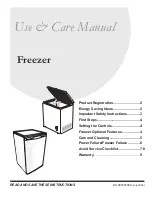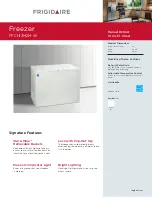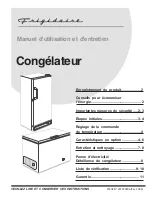
Cleaning and maintenance
Page EN-20
Defrosting and cleaning the
chest freezer
WARNING
Risk of explosion and injury!
Improper handling of the appliance can
lead to serious injuries and damage!
■
Never use defrosting sprays. They can
generate explosive gases.
■
The thermal insulation of your ap-
pliance is made of sensitive insulat-
ing material. Therefore, do not use
any electrical heating equipment, ice
scrapers, knives, defrosting sprays,
boiling water or any kind of aid with
an naked fl ame, for example candles,
to speed up the defrosting process.
The thermal insulation and the interi-
or are scratch and heat-sensitive and
can melt.
Health hazard!
An increase in the temperature of the
frozen food during defrosting can short-
en the shelf-life of the frozen food.
■
Ensure that the frozen food is kept
suffi ciently cool during defrosting.
CAUTION
Risk of injury!
Improper handling of the appliance
can lead to skin damage and injuries.
■
Never touch the inside walls or frozen
food with wet hands. Injuries can also
occur with dry hands though.
■
Use a dry towel to remove the frozen
food.
NOTICE
When cleaning, please note:
■
Defrost the appliance before it forms
a layer of ice and frost of more than
5 mm. Excessive ice formation inside
the appliance can break the door.
■
Do not use mechanical devices or oth-
er means to accelerate the defrost-
ing process, other than those recom-
mended by the manufacturer.
■
Defrost the freezer in winter when
the outside temperature is low. You
can then store the food on a balcony
or similar while you are cleaning the
freezer. Otherwise, you can wrap the
frozen food thickly in newspaper and
place it in another freezer in a cool
room. You also have the option of us-
ing an insulated bag.







































